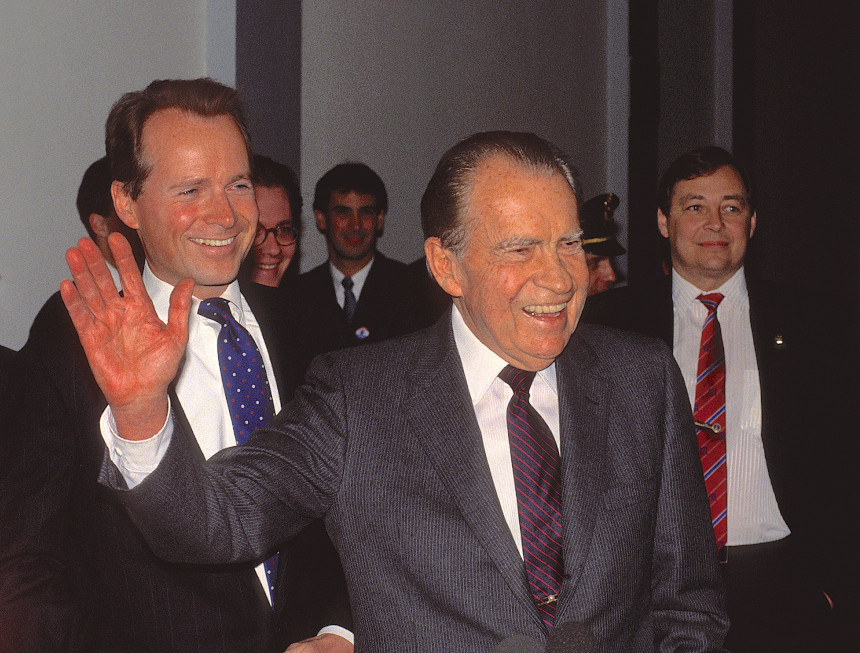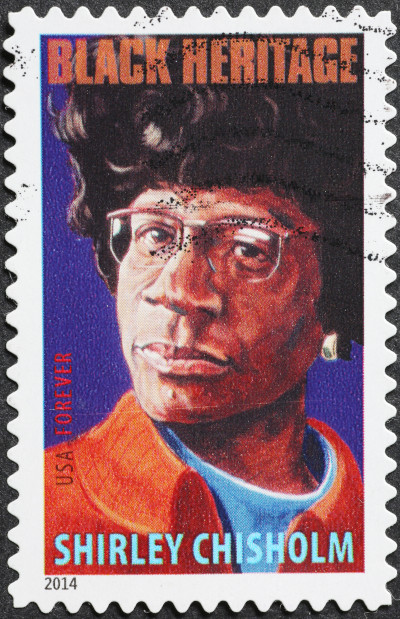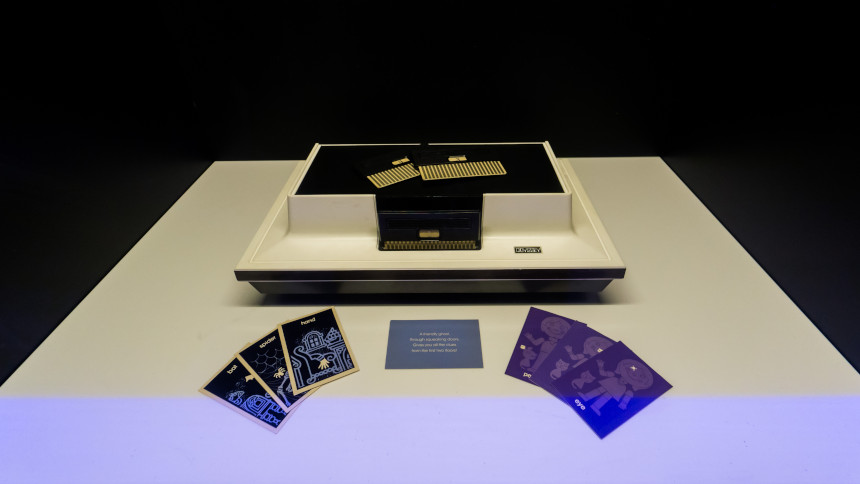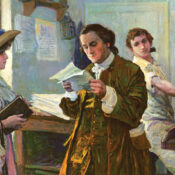For every massive event or major lever of social change, like the Vietnam War, there are dozens of small ones that inform the ways that life was heading. At the dawn of 2022, here’s a look back at ten big changes that were on the way in 1972. Some were tweaks to daily life, some were pushing boundaries, and some are still unresolved.
1. January 4: The First Pocket Calculator

Though its largely been replaced in daily adult life by the calculator app on your phone, high school and college students still rely on hand-held calculators in advanced math and science classes. And that’s appropriate, because not only was Hewlett-Packard’s HP-35 the very first pocket calculator, it was also the very first scientific calculator.
2. January 5: Nixon Orders the Space Shuttle

The maiden voyage of the first of America’s Space Shuttle fleet didn’t take place until 1981, but President Richard Nixon gave the order to develop the program in 1972. The program would run for 30 years and 133 successful missions before concluding in 2011.
3. January 25: Shirley Chisholm Announces Her Run

Shirley Chisholm was all about breaking ground. In 1968, she became the first Black woman elected to Congress, serving as a Democrat from New York’s 12th district. Though she would serve seven terms in that office, she took a big swing at a higher one in 1972. On January 25, Chisholm announced her candidacy for president. That made her the first Black person of any gender to try for a major party’s nomination, and the first woman to attempt it from the Democratic Party.
4. February 4: Mariner 9 Sends Vacation Pictures

Mariner 9 arrived at Mars in November of 1971 and became the first spacecraft from Earth to orbit the Red Planet. By February 4, it was sending back pictures of the surface of Mars. The 7,329 images were the best record of Mars to that time, producing 6,000 more pictures than all previous flyby missions combined. Mariner 9 documented roughly 85 percent of the planet, dramatically changing our understanding of Mars and laying the groundwork for future Viking and rover missions.
5. March 22: The Equal Rights Amendment Goes to the States

The first attempt at an Equal Rights Amendment launched in 1923, and it aimed at making sure that women had protected rights equal to a man’s. By 1971, the modern version of the bill finally made its way to a vote. It passed the House in October of that year, and then achieved Senate approval on March 22, 1972. It was sent immediately to the states for ratification, which is required of all new amendments to the U.S. Constitution. Ratification needed to happen by 1979, but by 1977, the process had stalled; at that point, 35 of the required 38 states had ratified it. A counter-movement by conservative women derailed the process, and several states revoked their ratifications. Attempts to revive the ERA and re-ratify the Amendment have been ongoing, with the most recent occurring in 2020.
6. May 22: The Video Game Age Begins

Magnavox introduced the Odyssey, the original home video game console, at a press event in May of 1972. It went on sale that September, packed with games like Table Tennis, Ski, and Submarine. The Odyssey struggled to gain ground in the market for a number of reasons (including a public misperception that the console only worked on Magnavox TVs). The Odyssey would be gone by 1975. However, in November of 1972, a new stand-up game cabinet would start appearing in public spaces, and it would eventually launch a revolution. That game was called Pong, and its maker was a California company called Atari.
7. July thru September: Bobby Fischer Triumphs

Throughout the summer of 1972, the world was riveted by . . . chess! In a Cold War clash of East versus West, the World Chess Championships saw Russian Boris Spassky face off with American Bobby Fischer. The two were already famous as world class players, and the match generated so much anticipation that games were broadcast on prime-time TV. After 20 hard-fought rounds, Fischer won, breaking a run of Russian dominion over the game. The Championships kicked off a wave of chess interest in the States, with the United States Chess Federation doubling its memberships in 1972.
8. August: Color Tips the Scales

Although color TVs had been available in America for some time, black and white sets had remained the dominant format due to price and the simple fact that most households just continued to use the original TV that they had. That is, until August of 1972. That was the month that the number of color TVs in American homes finally broke even with b&w sets. Black and white TVs more or less died in the 1990s; the last one offered by Sears appeared in 1990 ad circulars.
9. September 17: M*A*S*H Debuts

Widely acknowledged as one of the greatest TV comedies, M*A*S*H made its debut in 1972. The show would run for 256 episodes, signing off in 1983 with one of the most-watched programs of all time. During its run, the show won 14 Emmys; it was nominated for more than 100. While the show was set during the Korean War, the widely understood unspoken truth of the series was that it was frequently commenting on Vietnam.
10. All Year: Horror Comes Back to Comics
The trailer for Morbius (Uploaded to YouTube by Sony Pictures Entertainment)
Frederic Wertham’s book Seduction of the Innocent caused a cultural tempest in the 1950s. The anti-comics screed led to Congressional hearings and caused the collapse of horror-heavy publisher EC Comics. In an effort to protect their own interests, the other comic publishers agreed to heed the newly formed Comics Code Authority, one of the effects of which was a ban on horror content. In 1971, Stan Lee declined the Code seal from three issues of The Amazing Spider-Man so that he could tell a story about the consequences of drugs. The CCA reformed and relaxed some of their policies, leading to a horror boom. Marvel managed to debut Morbius, the Living Vampire, in 1971, but the real boom came in 1972; the publisher introduced Ghost Rider, Tomb of Dracula, Werewolf by Night, and more, while DC Comics debuted Swamp Thing, Etrigan the Demon, and others. All of the characters continue in some form today, and many (like Morbius, Ghost Rider, and Swamp Thing) have served as the basis for films and TV series.
Featured image: Shutterstock
Become a Saturday Evening Post member and enjoy unlimited access. Subscribe now




Comments
Hip Hop (Rap Music) began in the Bronx at an outdoor party. August 1973 according to most insiders. https://www.pbs.org/opb/historydetectives/investigation/birthplace-of-hip-hop
Time to update. This post is a year old. The page purports to be the headines from 50 years ago. It’s now 2023.
very good news quickly done,
No mention of Nixon’s historic trip to China in February 1972 or the Watergate break-in that June and how those events changed things. The color TV sales tipping the scales was interesting. Perhaps this was the year horror came back to comics. If so, then it should have been depicted with a ’72 comic book cover, not an excuse for a boring 2022 upcoming movie trailer. Please.
It was also the year real life horror came to the Olympics that summer in Munich. Look it up if you don’t believe me.
WELL DONE AS ALWAYS T S E P !!!!!!!!!!!!!!!!!!!!!!!!!!!!!!!!!!!!!!!!!!!!!!!!!!!!!!!!! KEEP UP THE GREAT WORK !!!!!!!!!!!!!!!!!!!!!!!!!!!!!!!!!!!!!!!!!! ESPECIALLY THE NORMAN ROCKWELL PRINTS. MY DONATION TO HIS MUSEUM IN STOCKBRIDGE MASS., IS IN THE MAIL !!!!!!!!!!!!!!!!!!!!!!!!!!!!!!!!!!!!!!!!!!!!!!!!!!!!!!!!!!! GO OAKLAND/LAS VEGAS RAIDERS TO S B AND JUST WIN BABY !!!!!!!!!!!!!!!!!!!!!!!!!!!!!!!!!!!!!!!!!!!!!!!!!!!!!!!!!!!!!!!!!!!
As a working engineer in those days I remember having shiny new calculators serve as pall bearers for my old slide rule with its approximate answers.